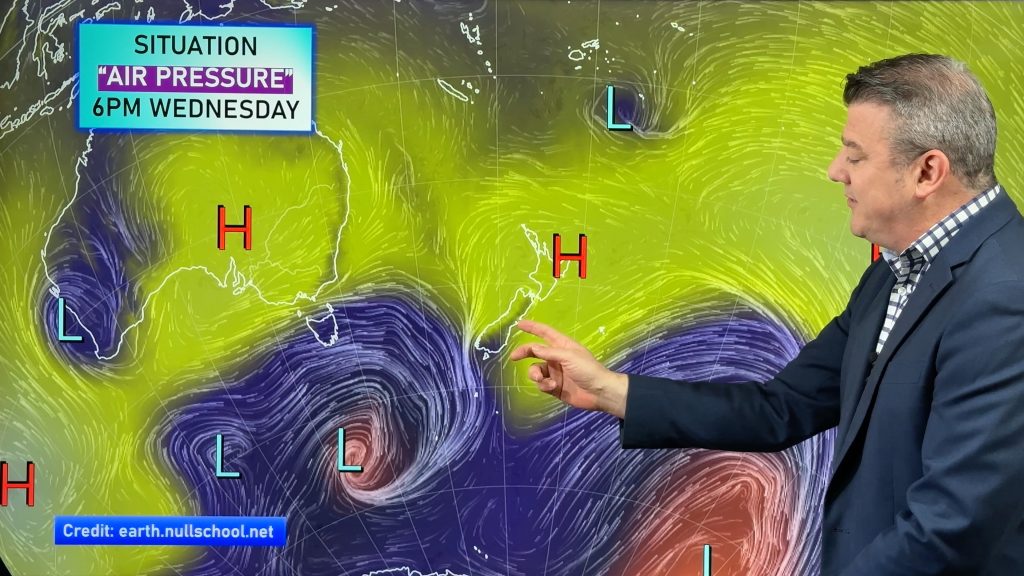
> From the WeatherWatch archives
Today we take a look back at a serious flooding situation which occurred in the deep south during the summer of 1984.
A national weather forecast on the morning of Thursday 26 January 1984 predicted heavy rain in Southland and Fiordland over the next 18 hours.
It was already raining when the forecast was given, but by afternoon the rain was falling steadily and getting heavier.
In the high country areas a north-westerly airstream was soaking the hills and mountains with rain that poured off the hillsides and into the headwaters of the rivers.
This weather flow was then met by a southerly front and resulted in a heavy deluge on the lower-lying parts of Southland.
By 9:00 pm that night the amount of rain which had fallen had caused some surface flooding in the streets of Invercargill, and the nearby towns of Riverton and Bluff.
The water was too much to be held by streams and rivers, and their banks were soon overflowing. Attempts were made to contain the water with sandbags and pumping, but with little success.
The level of the floodwaters grew higher until houses began to be flooded. Emergency services prepared to take action.
By 4:00 am on Friday morning the flooding was so severe that a state of emergency was declared by the Mayor of Invercargill.
In the morning light it could be seen that houses, streets, factories and shops were under water. Invercargill was a city cut in two by the flooded Otepuni Stream.
The rain kept falling and now the flooded rivers were unable to drain out into the Invercargill estuary, particularly at full tide. The water level grew higher and higher.
People were evacuated from houses all over Invercargill, but not only the city was affected. Throughout Southland the water levels rose, and the state of emergency was extended to cover all of the province.
By noon on the Friday the rain stopped and the sun began to shine, but the floodwaters kept on spreading.
Army and Air Force personnel were sent south to help the local Civil Defence workers.
Roads and railways lines were under water in places, cutting the province off from the rest of New Zealand. Invercargill airport was flooded with the water up to 3 metres deep, and with 10 light aircraft partly submerged.
Over 5000 people were forced to leave their homes and go to the evacuation centres that had been set up to help the refugees and keep records of where people were.
Helicopters were used to rescue people who had taken refuge from the flooding on the roofs of their houses. Some cattle were also moved to a safer place by helicopter, but thousands of sheep and cattle drowned.
143 mm of rain fell in Invercargill during this time, almost twice as much as the average rainfall for January. On 26 January alone the rainfall was a record 84.8 mm.
No human lives were lost, but there were huge losses in livestock and in damage to buildings and services.
Comments
Before you add a new comment, take note this story was published on 6 Nov 2011.





Add new comment
RW on 6/11/2011 2:43am
Some other flood events in Otago or Southland in the period 1978-1984 included those in October 1978, January 1979 (lesser, Mataura mainly), January 1980 and June 1980.
Reply
LM on 6/11/2011 4:40am
Not sure if I can put a link in this message but this gives a good description of what happened in during that storm.
http://hwe.niwa.co.nz/event/October_1978_Southland_and_Otago_Flooding
I remember travelling to Mataura to help as they were hit quite badly.
Reply
LM on 6/11/2011 2:37am
I remember that heavy rain during the evening of the 26th. It was torrential with little to no wind. The sun was already out on the Friday when the Waihopai river burst it’s banks inundating the suburb of Grasmere. I slept through the Civil Defence siren but luckily, the closest flooding was a couple of streets away.
Just been doing some research – there have been quite a few nasty weather events around the country over the last 100 years.
Reply